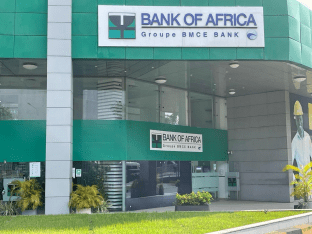Ghana’s banking industry has posted one of its strongest performances in recent years.
According to the September 2025 Monetary Policy Report released by the Bank of Ghana (BoG), the sector recorded an impressive GH¢9.7 billion profit-after-tax for the first eight months of 2025 — a 46.1% increase compared to GH¢6.7 billion in the same period of 2024.
This performance underscores a solid recovery and sustained profitability across all income streams, reflecting both prudent financial management and improved macroeconomic stability. The Bank of Ghana attributes the growth to higher income generation, better cost control, and lower impairment losses within the sector.
The data revealed that net interest income, a key driver of banking profitability, expanded by 21.8%, reaching GH¢19.2 billion as of August 2025, up from GH¢16.9 billion in August 2024. This surge was supported by an increase in total interest income, which rose 21.5% year-on-year to GH¢29.3 billion, compared to GH¢24.3 billion in the same period last year.
At the same time, interest expenses grew modestly by 20.9% to GH¢10.2 billion, indicating a slowdown in the rate of increase due to lower interbank lending rates. The decline in borrowing costs helped banks expand their margins, improving overall profitability.
The report also highlighted a 28.0% growth in the industry’s net operating income for August 2025, up from 10.9% in August 2024, a clear indication that the banking industry has regained momentum after years of economic uncertainty
Non-Interest Income Shows Impressive Recovery
Apart from interest-related gains, banks also benefited from strong growth in non-interest income streams. Other income grew by a staggering 47.3%, reaching GH¢4.8 million, a dramatic turnaround from a 2.9% contraction recorded in August 2024.
Similarly, net fees and commissions which come from services such as electronic transactions, loan processing, and account management, increased by 13.1% in August 2025. Although this was lower than the 22.9% growth recorded a year earlier, it remains a healthy contribution to total earnings.

The sharp rebound in other income was attributed to increased trading and investment activities, digital banking expansion, and a stronger recovery in the financial markets.
Despite rising profitability, the industry also recorded higher operating expenses. Operating costs grew by 19.5% in August 2025, compared to 18.9% in 2024. The increase was largely due to marginal growth in staff costs and administrative expenses, reflecting adjustments in wages and the cost of maintaining technology-driven operations.
However, analysts note that the gap between income growth and cost growth remains favorable, meaning banks have become more efficient. The sector’s ability to generate revenue faster than expenses highlights operational resilience and sound management practices.
Bad Debt and Impairment Losses Fall Sharply
A major contributor to the improved performance was the sharp decline in impairment losses. The report indicated that provisions for bad debt and asset impairments contracted by 46.0% in August 2025, compared to a 19.2% reduction in August 2024.
This contraction reflects stronger loan recoveries and higher asset quality following the economic stabilization policies implemented since 2023. The trend also suggests banks are managing credit risk more effectively while benefiting from improved loan performance in key sectors such as trade, manufacturing, and services.
The sector’s profitability ratios further confirmed its robust performance. The Return on Assets (ROA) improved from 4.9% in August 2024 to 5.6% in August 2025, while the Return on Equity (ROE) increased from 31.4% to 32.2% over the same period.
These indicators reveal that banks are earning more income on every cedi invested by shareholders and every cedi of assets they control, a reflection of the sector’s growing efficiency and sustainability.
Financial experts view this development as a sign of renewed investor confidence and an improved risk environment. The BoG report also suggests that continued macroeconomic stability and monetary discipline could sustain this profitability trend through the end of 2025.
A Sign of Recovery and Stability
The banking sector’s performance comes on the back of Ghana’s broader economic recovery, characterized by declining inflation, exchange rate stability, and increased lending activity. The sector has remained a vital pillar of economic growth, supporting businesses and households while maintaining strong capital and liquidity buffers.
According to analysts, the strong profitability of banks in 2025 demonstrates the effectiveness of Bank of Ghana’s regulatory interventions in restoring stability after the financial sector clean-up and the challenges brought by global and domestic shocks.
The sector’s continued growth also reflects increased consumer confidence, improved risk management, and the positive impact of digital transformation, which has expanded financial inclusion and reduced operational inefficiencies.
As Ghana’s financial system continues to recover, the Bank of Ghana has emphasized the need for prudence and risk management to sustain the sector’s gains. The focus, according to the report, will remain on maintaining price stability, credit discipline, and sound governance to prevent overheating and ensure long-term growth.
With a stronger earnings base, reduced bad debt, and stable interest margins, the banking industry appears well-positioned to continue its growth trajectory through the rest of 2025.
If current trends persist, the sector’s profitability could surpass GH¢12 billion by year-end — solidifying the Ghanaian banking industry’s status as one of the most resilient and profitable in Sub-Saharan Africa.
READ ALSO:‘We Are No Longer Where We Were’: BoG Governor Declares Economic Turnaround at Cedi@60 Launch























